
Inks - An Introduction to Basic Ink Types
Whether being written with on paper, tattooed on skin, or printed on a piece of vinyl, we know different inks are needed for different jobs. And, even for something as simple as hand writing, different inks will accomplish different purposes. Printing on vinyl is no different. An ink’s base (ie. water, solvent, latex, etc.) will affect how it dries, what materials it can print on, and its longevity. And, the printer you are using will often dictate what kind of ink you can use.
So, how does one decide what kind of ink you need?
The first question to ask is, what kind of jobs do you expect to be doing? Do you want to make flat signage, get into fancy vehicle wraps, or are you just starting up with your home printer? Once you have that question answered, you can figure out what kind of ink you will need to complete the job, and also what kind of printer you’ll need to work with, if you don’t have one already. If you already have a printer, that will dictate what kind of ink you need to buy.
Either way, have a read below to find out what different inks are capable of, and what will work best for the projects you have planned.
Water-based
When it comes to water-based inks, also known as aqueous, there is less to be said than for other bases, as most vinyls will not accept water-based ink. A special coating is needed on the vinyl to allow the ink to adhere, and the ink will sit on top of that coating, causing it to fade quicker. If you are using a normal home printer, chances are the ink will be water-based. Often this information can be found on the ink manufacturer’s website, if you are unsure. We carry one vinyl that is aqueous compatible, the Orajet 1917. So, if you want to get started on a home inkjet printer, the 1917 is a great place to start.
Solvent-based
Solvent-based inks are probably going to give you your best bang-for-buck. Most printable vinyls will be compatible with solvent-based inks, and they tend to have a good life span for indoor and outdoor applications. Solvent inks actually impregnate themselves into the vinyl, leading to the greater life span.
There are two options for solvent inks, plain old solvent and eco-solvent. The biggest difference you’ll notice is the smell, and it can be quite a difference. Eco-solvent inks require less ventilation, and the fumes are less likely to be harmful. They are also more bio-degradable. All that said, you’ll still want good ventilation with eco-solvent inks.
Latex
Latex is actually a water-based ink as well but contains very different compounds than aqueous ink. The printing process completely different. Latex inks work on a wide range of vinyls; a significantly wider range than aqueous inks and nearly as wide a range as solvent-based. The biggest advantage of latex is the drying time: no drying time at all. It comes out of the printer ready to go. It is more scratch resistant than solvent-based inks. Importantly, be aware of the heat needed for this ink. Some vinyls, especially window perf and chrome vinyl, are extremely sensitive to localized heat (different than the slow, uniform heat of the sun). They curl, wrinkle, and pucker, making a general mess. Research the material before printing and adjust heat settings as needed.
UV-Curable
UV-curable inks have a couple interesting properties that make them appealing, and one that doesn’t. The printing process subjects the ink to UV lighting that causes the ink to dry instantly. It also makes the ink resistant to scratching and fading. The problem is the ink can be less flexible, making it better for flat applications. More flexible UV-curable inks are available, but it is important to check with the manufacturer first, to make sure the ink can handle more aggressive curves. UV-curable inks work on many vinyls, but perform best on large, rigid substrates like metal, ACM, glass, and plastic.
Other types of inks include dye sublimation, screen printing, and alcohol inks. Other printing systems – for home use or graphics – include toner and thermal transfer foils. Much could be said about each of these inks and systems. The four ink types listed here should give you a good place to start in the graphics and signage industry. So, if you are just getting started or looking to upgrade your business, take a moment to think through what projects you are likely to take on, and decide what kind of ink will work best. But, remember, you don’t need the ideal setup to get started. Whatever you currently have on hand, do some testing and see what it is capable of. You might find you are already setup to meet your goals.

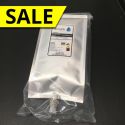

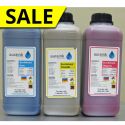
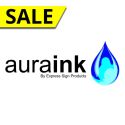



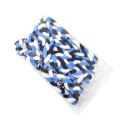

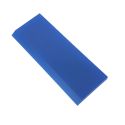

All comments